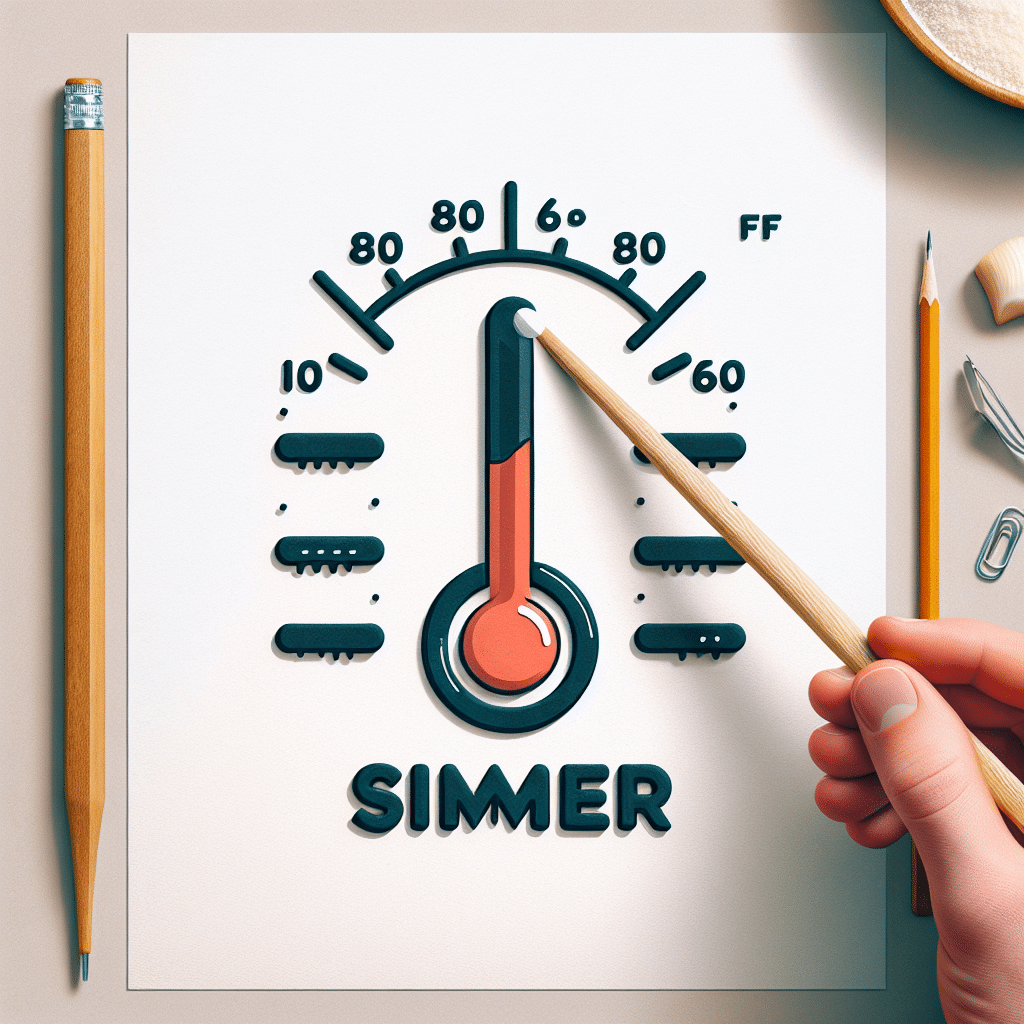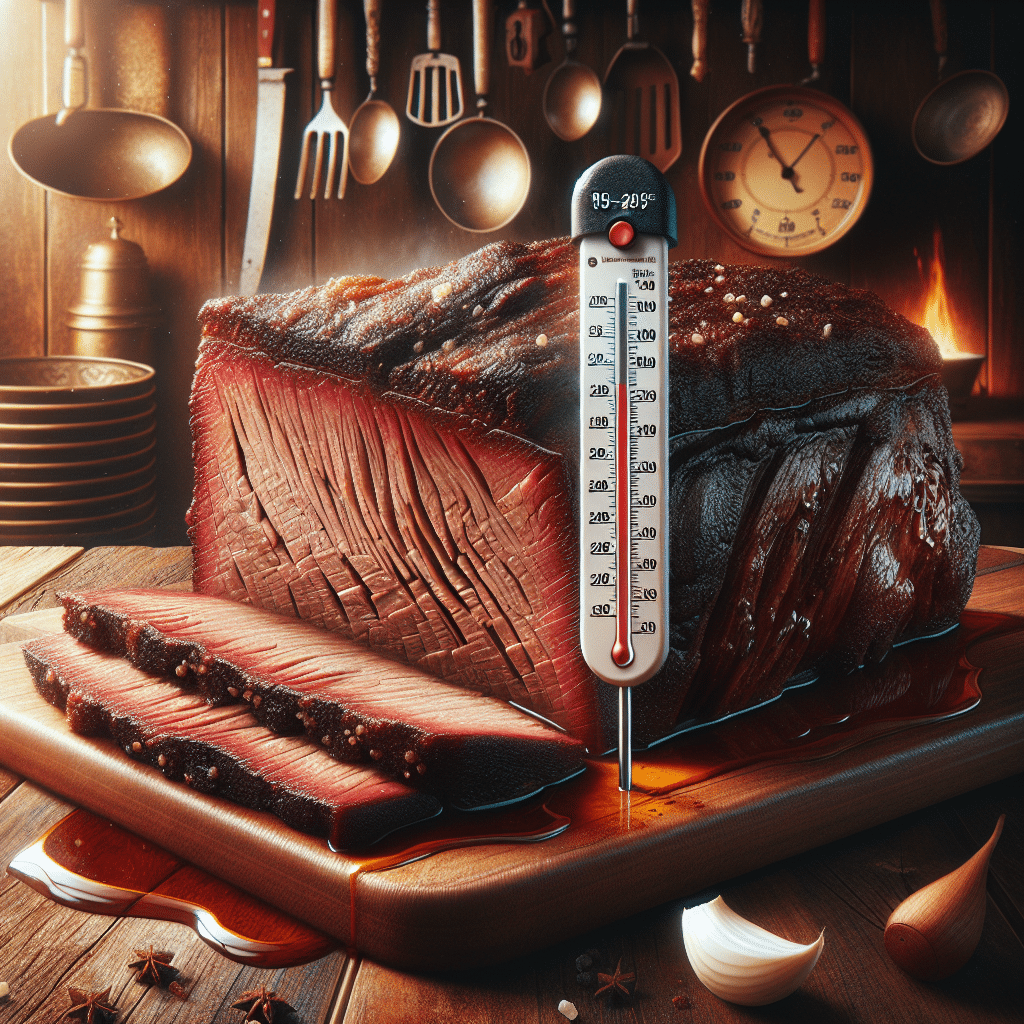Simmering is a crucial cooking technique that helps unlock the flavors in many dishes. Generally, simmering occurs when a liquid is heated to a temperature range of 180°F to 205°F (82°C to 96°C). At this temperature, small bubbles begin to rise to the surface without causing the liquid to boil aggressively. The simmering process allows ingredients to meld together, making it ideal for soups, sauces, and braises. Understanding the perfect simmering temperature is essential for achieving delicious and evenly cooked meals. In this article, we’ll explore the art of simmering, the science behind it, and practical tips to master this technique in your kitchen.
Understanding Simmering: The Basics
Simmering is often confused with boiling, but these two cooking methods have distinct characteristics. While boiling involves bubbles rising violently to the surface and vapor escaping rapidly, simmering presents a gentler approach, leading to more controlled cooking. This technique preserves delicate ingredients and prevents overcooking while allowing robust flavors to develop. Knowing how to achieve and maintain the right temperature is key to effective simmering.
Temperature Range
As previously mentioned, the optimal temperature range for simmering is between 180°F and 205°F (82°C to 96°C). In practical terms, your stove settings may vary depending on the type of stove and cookware used. Typically, achieving a simmer can be done effectively on a low to medium-low heat setting. You may need to monitor the process closely to prevent the transition to a boil.
Temperature Indicators
- Bubbles: Small bubbles will form and gently rise to the surface. If bubbles are rapidly breaking, you are likely at a boil.
- Sound: A gentle, steady sound often accompanies simmering, indicating controlled liquid movement.
- Steam: Minimal steam should be escaping during simmering.
The Science Behind Simmering
Simmering allows foods to cook slowly in a flavorful liquid, which is particularly beneficial for infusing tastes and tenderizing protein. Heat is transferred from the liquid to the food, breaking down connective tissues in meats and softening vegetables. This method also retains moisture, making it ideal for stews and braised dishes.
Benefits of Simmering
- Flavor Development: Simmering brings out the essence of herbs, spices, and ingredients, enriching dishes.
- Tender Textures: Proteins, especially tougher cuts, become tender and juicy when simmered slowly.
- Ease of Cooking: Simmering is a “set it and forget it” technique, allowing you to multitask in the kitchen.
Common Dishes That Require Simmering
Several popular dishes rely on simmering for successful outcomes. Below are a few examples:
- Soups: Vegetable soups, stock, and broths develop their flavors through simmering.
- Stews: Beef, chicken, or vegetable stews utilize simmering to achieve tenderness and depth of flavor.
- Sauces: Tomato or cream-based sauces often require simmering to meld flavors effectively.
- Rice and Grains: Cooking methods for various grains recommend simmering in water or broth.
Tips for Perfect Simmering
Achieving the perfect simmer is a skill that can be refined. Here are several practical tips to enhance your cooking:
Monitor Temperature
Use a kitchen thermometer to ensure your liquid is within the appropriate temperature range. Adjust the heat accordingly to stay within the desired limits.
Choose the Right Pot
Use a pot with a heavy bottom, as it distributes heat evenly and reduces the risk of scorching. A lid can also be used to control evaporation and maintain temperature.
Stir Occasionally
Stirring can help distribute heat evenly throughout the dish and prevent sticking at the bottom of the pan.
Counterarguments: When Not to Simmer
While simmering is a versatile technique, it’s not suitable for all cooking methods. Certain dishes benefit from boiling to achieve a particular texture or temperature quickly. Knowing when to simmer versus when to boil can make a significant difference in the final product.
FAQ Section
What is the difference between simmering and boiling?
Simmering occurs at a lower temperature (180°F to 205°F) where small bubbles gently arise, while boiling happens at a higher temperature (212°F or higher) with vigorous bubbling.
How can I tell if my dish is simmering properly?
Look for small bubbles rising steadily and gently breaking the surface, along with a soft sound from the liquid. Excessive bubbling or steam signifies boiling.
Is simmering necessary for all cooking methods?
No, simmering is not required for all dishes. Some foods benefit from quick boiling or different cooking techniques based on desired outcomes.
Can I simmer on an electric stove?
Yes, you can simmer on any stove, including electric ones. Adjust the temperature to low or medium-low heat, and monitor closely to maintain the simmering range.
How long should I simmer my dish?
Simmering time depends on the recipe and ingredients. Tough cuts of meat may require longer times (1-3 hours), while vegetables may only need 20-30 minutes.
Conclusion
Mastering the art of simmering is a crucial skill for any home cook. By understanding the proper temperature range and techniques, you can create flavorful, well-cooked dishes that impress family and friends. With practice, your confidence in using this method will increase, allowing you to explore a wide array of recipes and culinary styles.

